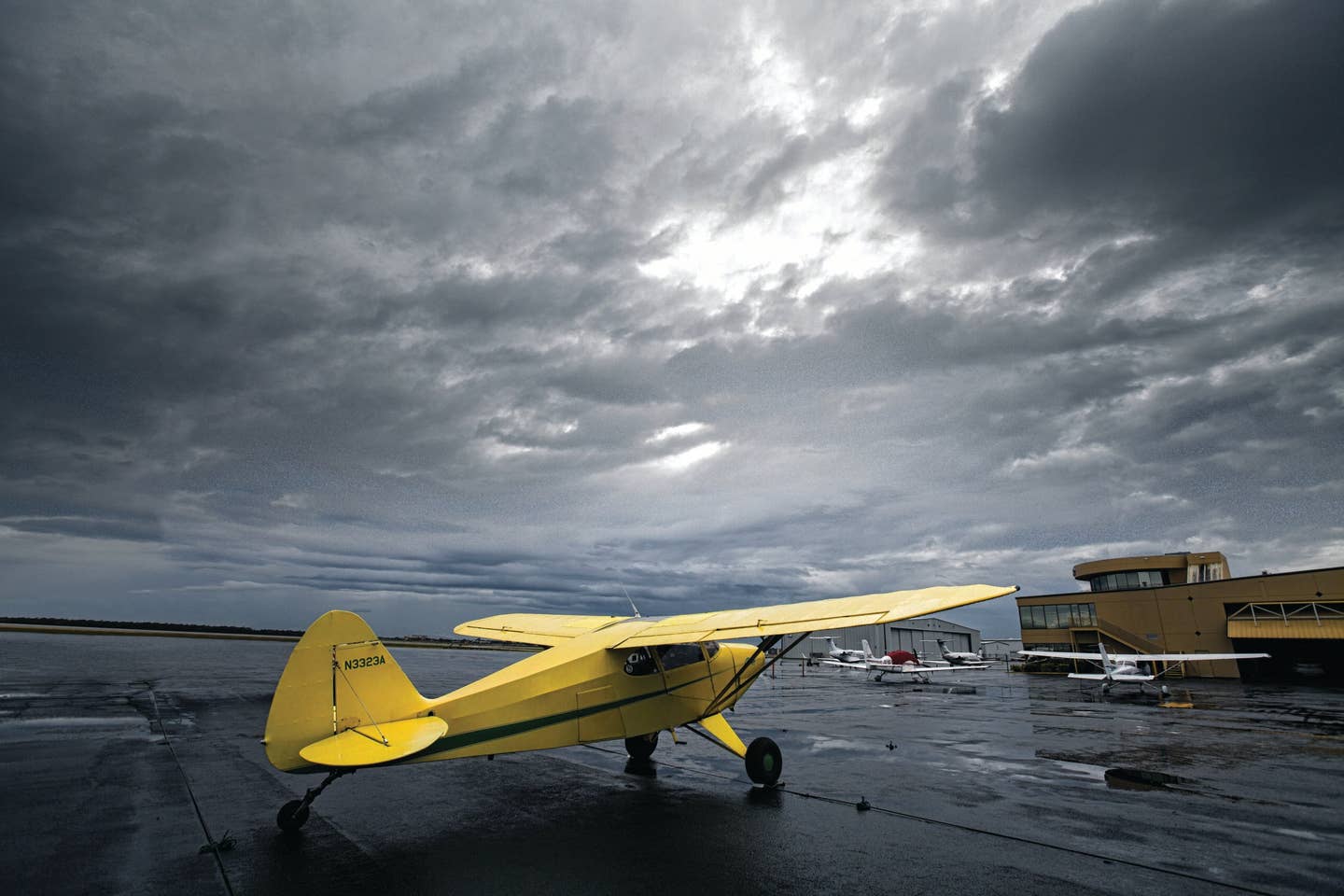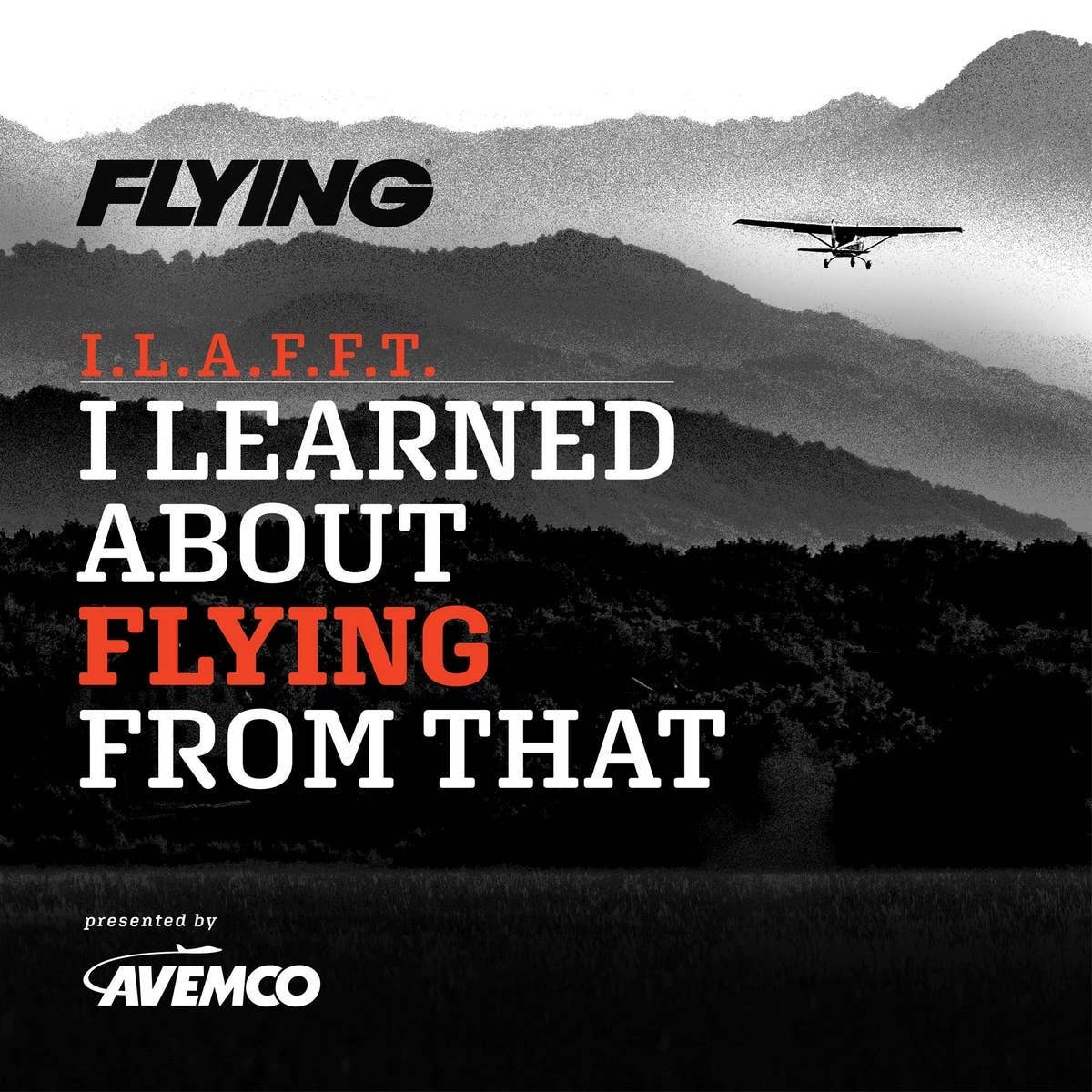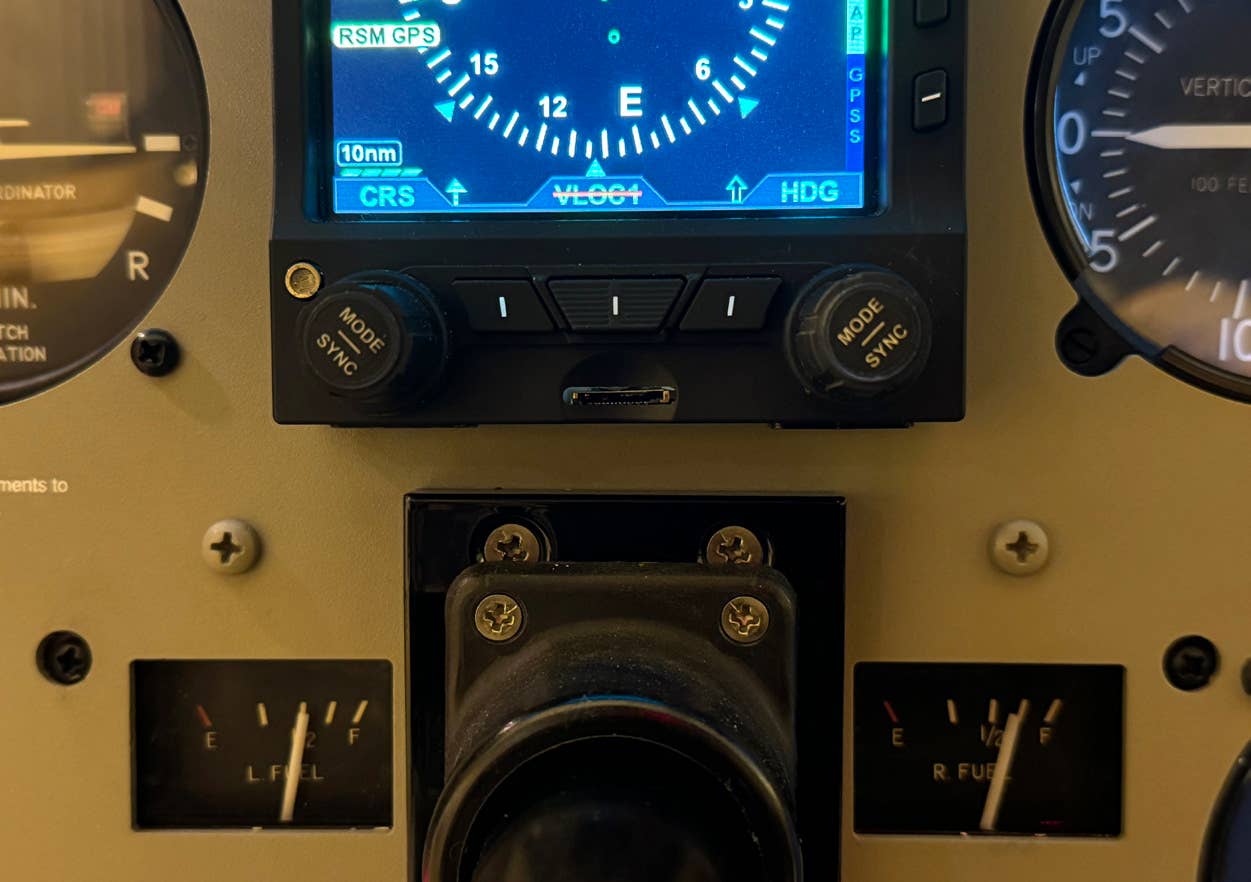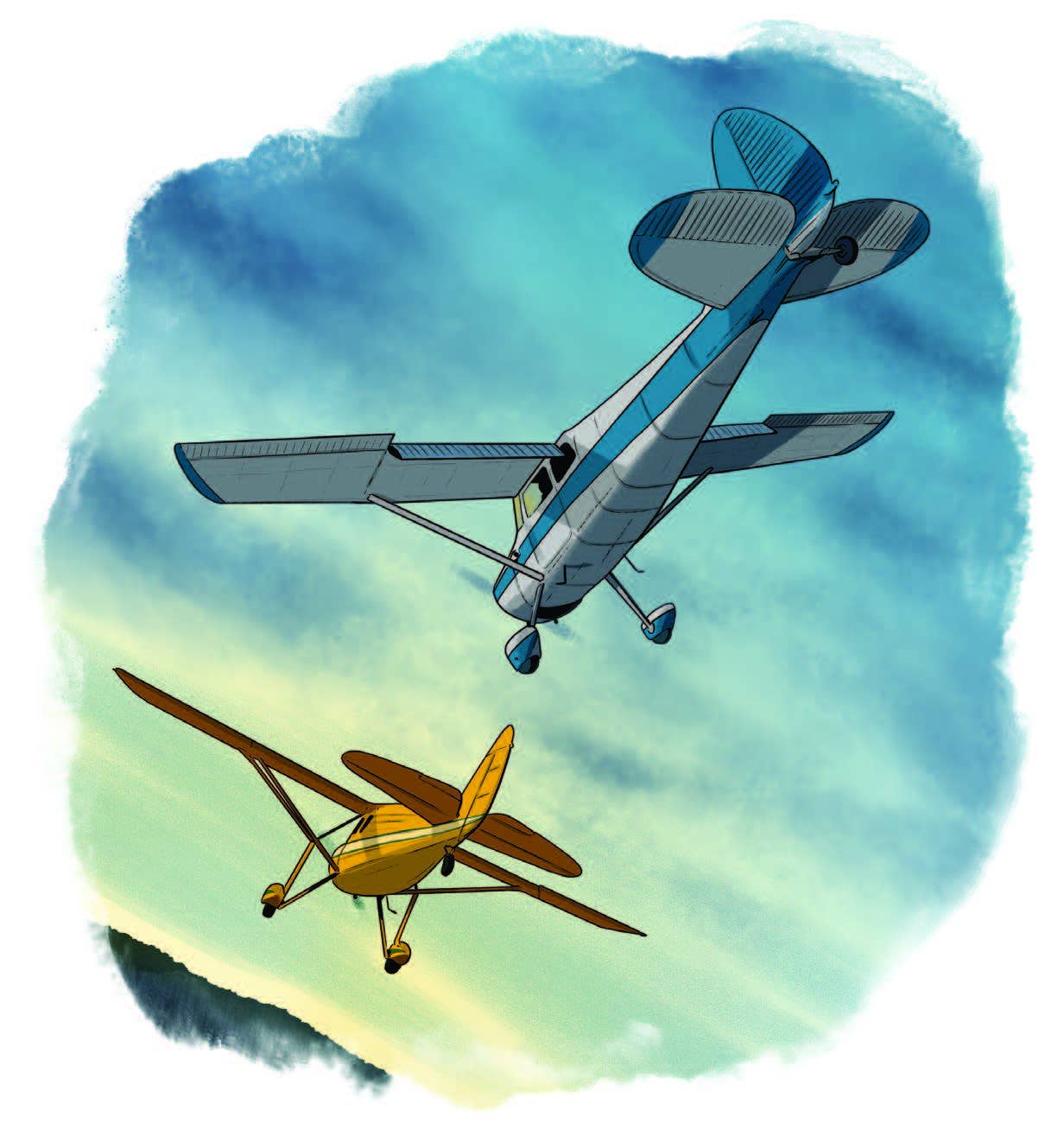
** To see more of Barry Ross’ aviation art,
go to barryrossart.com.**
I had flown west through Merrill Pass on my way from Anchorage, Alaska, to the Stony River country and needed to set up a tent camp on one of the small gravel bars along the Swift River, a tributary of the larger Stony. The camp would be used during an upcoming trophy moose hunt for one of our German clients. After making an exhaustive survey of the river’s meager bars, I finally found one that was suitable for the campsite. After landing and setting up the tent camp, I took off and was flying along the southern slopes of the Neacola Mountains, trying to spot a really large bull moose.
As I was flying around the north end of Caribou Mountain, I spotted a big bull coming down a wide draw above the isolated peak. He would move out of that draw, and it was now up to me to find a place to land on Caribou Mountain and to erect a spike camp, one from which we could hunt in a couple more days. The only place I could find on the low, tundra-covered mountainside was a relatively steep ridge marching up its northern slope. With the large 25-by-11-by-4-inch tundra tires that the Super Cub wore, I knew I could safely put it down in the deep moss, tundra and grass of that ridge.
The landing would be a bit unorthodox. I would have to fly directly toward the higher mountains, and just before smacking into them roll left more than 90 degrees for a very steeply banked 180-degree descending turn. While still in the steep turn, I would quickly yank on full flaps, roll out and then point the nose almost straight down toward the rising slope of the ridge. The required roll rate was asking a lot from the Cub’s notoriously small ailerons. I would monitor all this through the smoke-tinted Plexiglas skylight of the Cub while looking almost straight up in order to see the ground.
After the turn was complete, I came well back with the stick and quickly added power for the uphill landing. It required full throttle to complete the landing and rollout. Rather than stop on the steep slope, I elected to power on up to the relatively flat top of the ridge. My plan was to cool the engine and shut things down once I had reached the top.
What I hadn’t seen in the flat light of the heavily overcast day was a deep depression directly ahead of the airplane, right where the slope stopped and the flat area should have begun. By the time I saw that 10-foot-deep depression, at least 200 yards across, the Cub had already rolled over the edge, tipped its tail up and plunged down into it. I learned right away that the bottom of the huge pit was a series of huge granite boulders hidden beneath a thick layer of moss, lichen and stunted willows.
With the tail pointed skyward, the airplane’s prop was now useless. Vegetation had filled the engine’s air intake screen. The gear was damaged too, of course. Worse, though, was the right wing. I could see it was bent upward almost 20 degrees at the midpoint of the aileron. All in all, the little Cub was a mess. In real time, it was just another bush accident caused, as most are, by pilot error. I really should have stopped it on the ridge and, at the last moment, kicked in full rudder to turn the tailwheel 90 degrees and prevent the airplane from rolling back down the slope.
I climbed out and made myself comfortable on the soft tundra, and then pondered my next step. I was on the wrong side of the very impressive Alaska Range and, as a result, radio communication was severely limited. This is truly remote country. There were several choices, and I was mentally going through them all. It was just about then that I heard a helicopter.
I jumped to the Cub, hit the master and radio switches, and then transmitted in the blind. I was hoping the chopper pilot was listening on the emergency frequency, 121.5.
“Mayday, mayday, mayday, Piper 1858 Alpha, Piper 1858 Alpha, north end of Caribou Mountain. Helicopter over the Stony River, you copy?”
“Yeah, roger on that, 58 Alpha. Are you the yellow Cub over there with the goofy parking technique?”
“Yeah, that’s me. How busy are you these days?”
“Just finished a job at Aniak, and I’m deadheading to Merrill Field. Looks like you could use a hand down there though, that right?”
“I’d sure appreciate it. Got time for a short visit? I’ve got a jug of hot coffee down here.”
“I could use the coffee. I’ll put this egg beater in your backyard there in just a minute.”
Over that cup of Thermos bottle coffee, I learned that the pilot, a retired Army colonel, had formerly flown with the crazy Jolly Green Giants out of Thailand and Vietnam. He agreed to lift me off the mountain and drop me down at the campsite on the Swift. That would save me a seven-mile walk through some pretty tough country. After that, he’d help with the crippled Cub. First, though, he had another contract to perform. He’d be back for the Cub work in a couple more days.
He flew me about 40 miles across the Stony River to Cairn Mountain, where Sparrevohn, a former U.S. Air Force White Alice radar site, was located. At Sparrevohn, I was able to get a radio patch through to my mechanics back in Anchorage. Finally, the chopper pilot dropped me back at my gravel bar campsite before departing for his flight through Merrill Pass and back to Anchorage. That left me alone to nibble on survival rations while a family of wolves watched with curious faces.
The next morning, my two mechanics arrived in a Cessna 170 and, after we had again climbed the flanks of Caribou Mountain, began work on the Cub. Once the wings had been carefully removed, the two mechanics and I hiked back down to the gravel bar campsite.
The next day, the colonel returned with his chopper. It took him only two trips to sling the broken Cub from Caribou Mountain to our little gravel bar campsite.
Our first chore was to place the right wing upside down on the gravel bar, where I could jump up and down on it to stomp most of the bend from the main spar. Many pilots would find that procedure a bit crude. On the other hand, it does work. The wing later got the Cub back through Merrill Pass and home to Merrill Field. A new wing had to be installed before the Cub could fly again. The new one was a 15-rib wing, rather than the 13-rib model that my 1952 agricultural-model Super Cub originally wore on each side. A new 41-pitch Borer prop was screwed on, the air intake replaced and the landing gear repaired. The wings required re-rigging, of course, but that’s an easy job. It calls only for a good spirit level, one wrench and a bit of patience. After that, Mr. Piper’s tough little Super Cub was once again ready for the air.
Thousands of hours of Alaska outback flying had allowed me to become seriously inattentive and casual during a chancy bush landing several hundred miles from the nearest town or maintenance facility. It's true that familiarity really can breed contempt. What did I learn from that experience? I learned to always inspect both my intended landing spot and the overrun area beyond. Such an inspection here would have saved me thousands of dollars, considerable time and a very red face.

Sign-up for newsletters & special offers!
Get the latest FLYING stories & special offers delivered directly to your inbox






